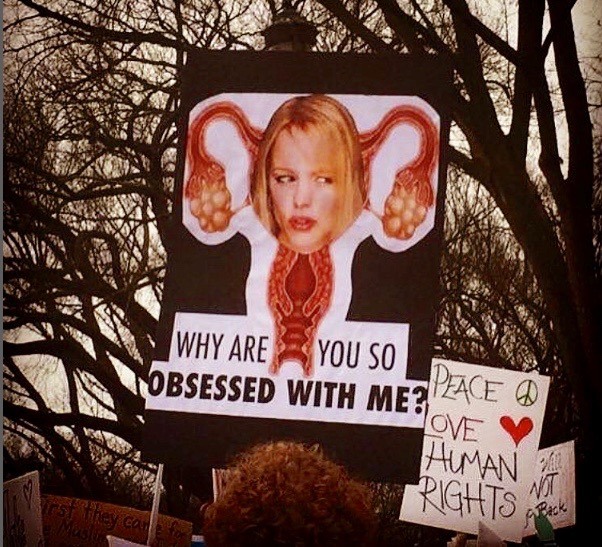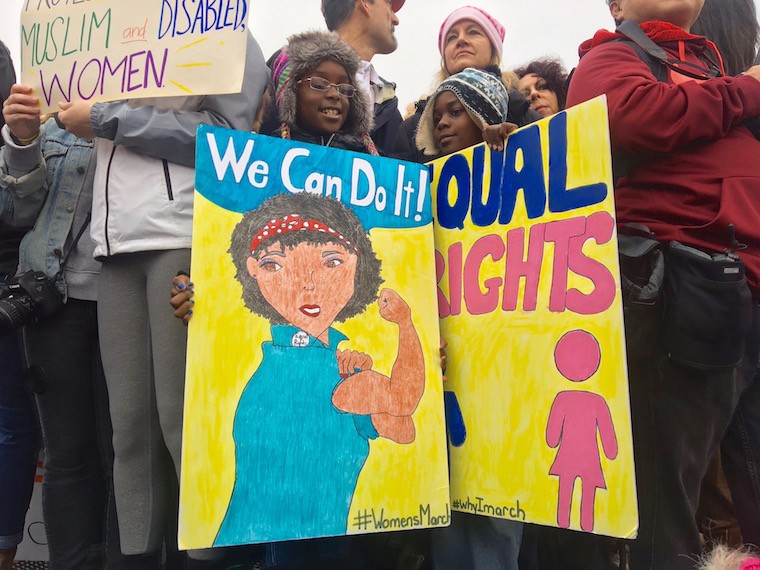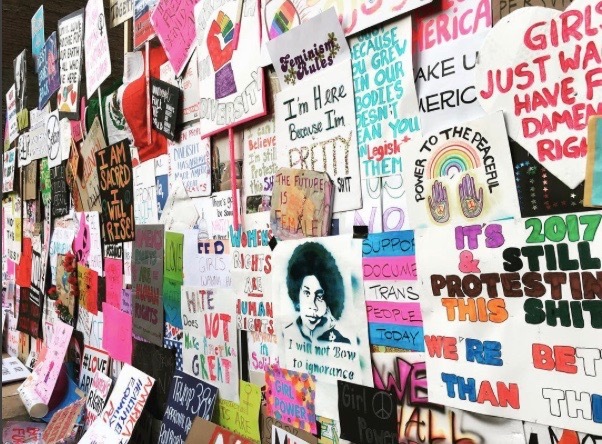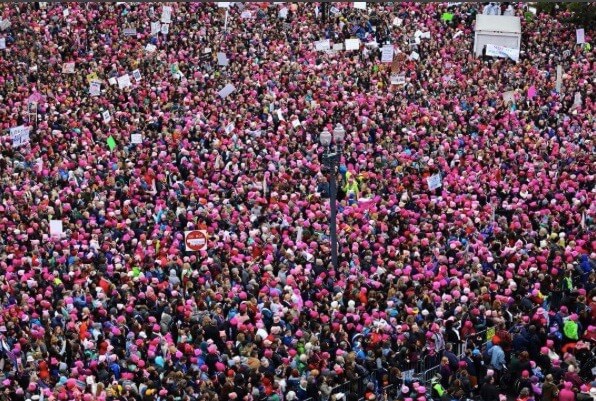Quick: Who organized it? What was its platform? And what did it aim to accomplish? Even if you were among the millions to hit the streets on Saturday, I doubt you can answer that. Beyond being a sort of rebuke to President Trump's inauguration the day before, it's tough to boil the global demonstrations down into a single message. And guess what? That’s okay.
If you think of the Women's March less like a traditional protest—which usually is a physical show of force, an intimidating display of strength in numbers, to tip the scales in a political negotiation—and more like a brilliant, messy group vision board, it makes more sense. And it could be all the more powerful for that reason.
Hear me out—especially those who have never dabbled in the self-help arts or those who openly mock things like vision boards, as I used to before I read The Artist’s Way and (joyously) became that which I formerly judged.
A vision board is just what it sounds like: a collage of images, representing aspirations and goals. Words can take a back seat, letting the visuals speak for themselves, to tap directly into the powerful, emotional core of your being—and let the critical, judgmental, limiting parts of your brain take a breather.

{{post.sponsorText}}
Read on for the ways the Women’s March resembled a huge vision board—and what that could create for the future.

It was all about inspiration
Everywhere, people were paying due to the artists and thinkers who inspired them. The signs I saw drew on cultural figures of all stripes: From Audre Lorde (“I am deliberate and afraid of nothing”) and Angela Davis (“I am no longer accepting the things I cannot change; I am changing the things I cannot accept”) to Beyonce (“Boy, bye”) and even Britney: One man proudly held a placard that said, “You’re toxic. I’m slipping under.”
So, yeah, it was a big tent. Through the lens of traditional persuasive techniques, a “Toxic” callout would not seem to be a logical or effective slogan—but under the rules of vision boarding, it’s all about who you’ve connected with emotionally, and tapping into the powerful feelings they evoke.

It was abstract—less about words and more about emotion
On the way to the march, my friend and I stopped in a drugstore to pick up some supplies. Seeing us holding a hot pink posterboard and a black Sharpie, the young woman behind the counter gave us a raised fist and said, “Yes!” And then she leaned forward: “Can I ask you, what are you marching for? I’m confused about what it is exactly.” To my surprise, my fellow "reSister” and I gave totally different answers. The #WhyIMarch meme became a thing specifically for this reason: seemingly every person had a different explanation.
Without the narrow focus of a traditional protest, this was more of a parade. The unofficial, unbelievably simple motto seemed to be: “We're here, and we won't be silenced.” And that seemed like enough: In a divisive political climate that pits groups against each other, the simple act of showing up for each other was transformative.

It involved crafts!
Just as you might stock up on glue sticks and glitter for your vision board, most of us did some prep for this (and of course, Instagrammed it). Whether you got out your posterboard and markers, knitted a pink pussy hat, or created lady parts-inspired masterpieces, the DIY-ing of it all was impressive. Professional-grade placards were virtually non-existent, as individual expression won the day over artistic skill.
After all, with vision boards, it doesn’t have to look pretty; it just has come from you. And taking action through creativity can be a surprisingly powerful thing. As productivity guru Paul Jarvis says in his latest newsletter, “Art is a powerful tool. It has a knack for humanizing emotions and vocalizing injustice in powerful ways.... Evil wants you to undervalue art and creativity because it’s so powerful.” And the effect is amplified when you work with others—in effect, January 21, 2017, was the biggest women’s circle the world has ever seen.

It created an IRL model to build on
According to self-love guru (and vision boarding pro) Nitika Chopra, the secret to making a vision board come to life is to “see it and be it.” With the costuming on display Saturday—everything from the ubiquitous pink hats to Rosie the Riveter get-ups and even a Princess Leia (RIP, Carrie Fisher)—it seemed as if we were stepping into the roles we want for ourselves and acting out the future we want to create.
Suddenly, before my eyes was the resourceful, optimistic, inclusive energy America has always been known for, which I haven’t seen reflected on our TV screens in a while (and certainly not in President Trump’s inauguration speech, with its evocation of “American carnage” and yes, even a Batman villain).
But this is just the start of “see it and be it.” If you were among the millions of people around the world who felt called to march, congratulations—you’ve created a moment that’s unprecedented. We are, however, living through unprecedented times, with the White House press secretary (who is paid by the taxpayers to keep the people informed about their government) christening a new era of “alternative facts” as millions marched around the world. There’s a reason the phrase “There are no words” keeps springing to mind. Perhaps—just as with vision boards—something more than words, more than intellect, is required to meet these times.
Yes, wellness is (and always has been) a big part of activist movements. And here's why feminism and self-care go hand in hand.
Loading More Posts...